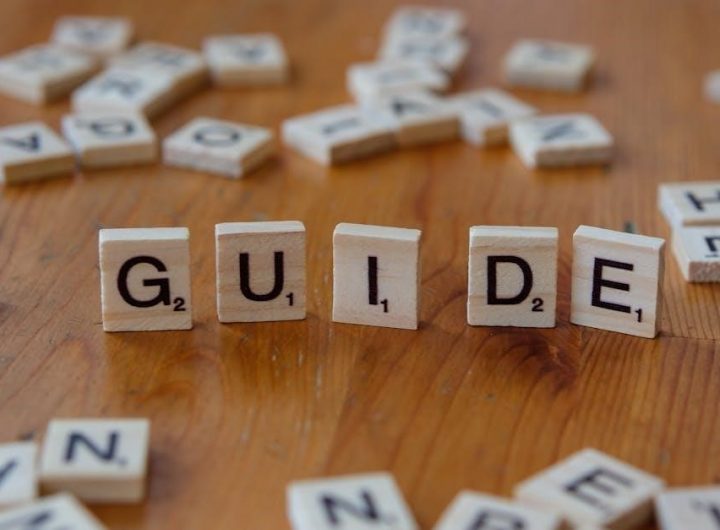
Mudras y su Significado⁚ Una Guía Detallada
Mudras, ancient hand gestures, serve as potent tools in yoga and meditation. Originating from Sanskrit, ‘mudra’ signifies ‘seal’ or ‘gesture’. These symbolic hand positions channel vital energy, fostering physical and mental well-being. Exploring mudras offers a pathway to deeper self-awareness and enhanced spiritual practice, as detailed in various PDF resources.
Introducción a los Mudras
Embark on a journey into the world of mudras, sacred hand gestures rooted in ancient Indian traditions. These gestures, more than mere hand positions, are symbolic expressions that channel energy and intention. Mudras serve as a bridge between the physical and subtle realms, facilitating a deeper connection with oneself and the universe.
Within yoga and meditation practices, mudras are employed to direct the flow of prana, the vital life force, influencing various aspects of well-being. Each mudra carries a unique significance, engaging specific energy pathways within the body and mind. By consciously forming these gestures, practitioners can cultivate desired states of consciousness, enhance focus, and promote healing.
This detailed guide delves into the essence of mudras, exploring their origins, classifications, and profound effects. Discover how the simple act of positioning your hands can unlock a wealth of benefits, transforming your yoga and meditation practice into a more enriching and transformative experience. Whether you’re a seasoned practitioner or new to the world of mudras, this guide provides valuable insights to deepen your understanding and application of these powerful tools.
Definición de Mudra⁚ Gesto, Sello y su Origen Sánscrito
The term “mudra” originates from Sanskrit, the ancient language of India, where it encompasses multiple layers of meaning. Primarily, mudra translates to “gesture” or “seal,” signifying a symbolic hand position that channels energy and intention; These gestures are not arbitrary; they are carefully crafted expressions that engage specific energy pathways within the body and mind.
As a “seal,” a mudra acts as a lock, containing and directing the flow of prana, the vital life force. This containment allows practitioners to focus and amplify the energetic effects of the mudra, creating a powerful tool for transformation.
The origins of mudras can be traced back to ancient Vedic traditions, where they were used in rituals and ceremonies to invoke deities and connect with the divine. Over time, mudras became an integral part of yogic practices, serving as a means to deepen meditation, enhance physical well-being, and unlock spiritual potential. Understanding the Sanskrit roots of mudra provides a deeper appreciation for their profound significance and transformative power. Explore readily available PDFs to expand your knowledge of these ancient practices.
Tipos de Mudras⁚ Manos (Hasta), Cuerpo (Kaya) y Conciencia (Citta)
Mudras, as powerful gestures, are categorized into three primary types based on the body parts involved and the focus of their energetic influence. These categories are Hasta Mudras, Kaya Mudras, and Citta Mudras. Each type offers a unique pathway to access and manipulate the subtle energies within us, leading to enhanced well-being.
Hasta Mudras, the most commonly recognized, involve hand gestures. These mudras use specific hand positions to create energetic circuits, influencing various aspects of our physical and mental states. Gyan Mudra, for example, is a Hasta Mudra known for enhancing focus and concentration.
Kaya Mudras encompass bodily postures and movements, engaging the entire body to direct energy flow. These mudras often involve specific alignments of the spine, limbs, and torso to unlock energy channels and promote balance.
Citta Mudras, the most subtle, focus on mental and emotional states. These mudras involve visualizations, breathing techniques, and focused intention to influence consciousness and cultivate inner peace. Exploring these diverse mudra types provides a comprehensive understanding of their profound impact. Consult readily available PDFs for in-depth knowledge.
El Significado de los Dedos en los Mudras
In the intricate art of mudras, each finger holds a unique symbolic significance, representing different elements and qualities that influence our well-being. Understanding these associations is crucial for harnessing the full potential of mudras in yoga and meditation practices. These connections provide a roadmap to inner harmony.
The thumb, often associated with the universal Self or the ego, symbolizes fire and willpower. Connecting the thumb with other fingers in mudras often signifies uniting the individual self with the universal consciousness.
The index finger represents air, knowledge, and expansion. It is linked to the planet Jupiter and embodies wisdom and learning. In mudras, the index finger guides awareness and enhances intellectual capacity.

The middle finger corresponds to space or ether, symbolizing patience, responsibility, and discernment. Associated with Saturn, it fosters stability and inner strength. Engaging the middle finger in mudras cultivates grounding and resilience.
The ring finger represents earth, energy, and vitality. Linked to the sun, it embodies health, enthusiasm, and creativity. Mudras involving the ring finger enhance physical well-being and inspire artistic expression.
The little finger symbolizes water, communication, and intuition. Associated with Mercury, it facilitates emotional balance and strengthens social connections. Mudras using the little finger promote adaptability and clear communication. Accessing PDFs allows for deeper insight.
Cómo los Mudras Canalizan la Energía Vital (Prana)

Mudras act as conduits, skillfully directing the flow of prana, the vital life force, throughout the body. By specific hand gestures, mudras create energetic circuits, influencing physical, mental, and emotional states. This redirection of prana can unlock profound healing and transformative potential, detailed further in PDF resources.
The science behind mudras lies in their ability to stimulate specific nerve pathways in the hands. These pathways are connected to different parts of the brain and body. When mudras are performed, they create subtle pressure points that trigger corresponding responses. These responses influence the flow of energy.
Different mudras target various energy channels, known as nadis, to clear blockages and restore balance. For example, Gyan Mudra connects the thumb and index finger, promoting knowledge and receptivity by enhancing the flow of prana to the brain. The thumb-fire element increases focus and concentration.
By engaging in mudra practice, individuals can consciously harness and direct their prana, optimizing energy levels and promoting overall vitality. Consistent practice enhances awareness of the body’s energetic landscape, enabling practitioners to fine-tune their inner harmony. The index-air element increases knowledge.
Through this intricate system, mudras serve as a powerful tool for self-regulation, fostering a deeper connection between mind, body, and spirit. The middle-space element increases patience and responsibility. Mudras can be learned through PDF resources, but also from other platforms.
Mudras Comunes y su Significado
Several mudras are commonly practiced for their specific benefits, each carrying a unique significance. Gyan Mudra, joining the thumb and index finger, enhances knowledge, focus, and receptivity. Chin Mudra, similar to Gyan Mudra with palms facing down, grounds energy and promotes inner peace. These are detailed in PDF resources.
Anjali Mudra, or prayer pose, involves pressing the palms together at the heart center. It symbolizes reverence, unity, and connection to the divine. Dhyana Mudra, with hands resting in the lap, palms up, fosters deep meditation and tranquility by calming the mind and promoting inner reflection.
Surya Mudra, folding the ring finger to the base of the thumb, increases body heat, improves digestion, and stimulates metabolism. Prana Mudra, joining the thumb, ring, and little fingers, activates vital energy, boosts immunity, and enhances overall vitality.
Vayu Mudra, folding the index finger to the base of the thumb, balances the air element in the body, alleviating anxiety, nervousness, and bloating. Shunya Mudra, folding the middle finger to the base of the thumb, addresses ear problems, improves hearing, and enhances concentration.
Each mudra serves as a unique key to unlocking specific energetic pathways, offering practitioners a diverse range of tools for self-healing and spiritual growth. These common mudras, with their profound meanings, offer a pathway to enhanced well-being. Mudras can be learned through PDF resources.
Gyan Mudra (Jnana Mudra) y Chin Mudra⁚ Diferencias y Similitudes
Gyan Mudra and Chin Mudra, both foundational hand gestures in yoga and meditation, share striking similarities yet subtle distinctions. Both mudras involve joining the tip of the thumb and index finger, forming a circle while extending the remaining three fingers. This connection symbolizes the union of individual consciousness with universal consciousness, fostering deeper awareness and inner peace.
The primary difference lies in the hand position. In Gyan Mudra, the palms face downwards, grounding energy and promoting receptivity. This orientation is often practiced during sunrise, to harness the sun’s vital energy. Conversely, in Chin Mudra, the palms face upwards, symbolizing openness and a willingness to receive divine grace.
Despite this variation, both mudras offer similar benefits. They enhance concentration, improve memory, and calm the mind. These gestures are believed to stimulate the flow of prana, or vital life force, throughout the body, promoting overall well-being. By practicing either Gyan Mudra or Chin Mudra, individuals can tap into a deeper state of meditation and cultivate inner stillness.
In Kundalini Yoga, both mudras are employed to facilitate specific energetic effects. Gyan Mudra is often used during the day, while Chin Mudra is practiced during sunset to retain the sun’s energy. Understanding these nuances allows practitioners to tailor their mudra practice to their individual needs and intentions.
Dhyana Mudra⁚ El Mudra para Calmar la Mente
Dhyana Mudra, a quintessential gesture of meditation, embodies profound tranquility and mental stillness. This mudra, often depicted in images of Buddha, promotes a state of deep contemplation and inner peace. It is a powerful tool for calming the mind, reducing stress, and enhancing focus.

The Dhyana Mudra is performed by placing the hands in the lap, with the right hand resting on top of the left, palms facing upwards. The tips of the thumbs gently touch, forming a closed circle. This circle symbolizes wholeness and unity, representing the integration of all aspects of being.
By adopting the Dhyana Mudra, practitioners create a receptive and balanced energy flow within the body; This posture encourages the mind to quiet down, allowing thoughts to pass without attachment. It facilitates a deeper connection with the present moment, fostering a sense of serenity and equanimity.
The benefits of Dhyana Mudra extend beyond mental calmness. It can also improve sleep quality, reduce anxiety, and enhance overall well-being. Regular practice of this mudra can cultivate a profound sense of inner peace and resilience, empowering individuals to navigate life’s challenges with greater clarity and composure.
Whether practiced during formal meditation or in moments of quiet reflection, Dhyana Mudra offers a simple yet powerful way to access inner stillness and cultivate a calm and focused mind. Its gentle gesture serves as a constant reminder of the inherent peace that resides within each of us.
Surya Mudra⁚ El Mudra del Sol
Surya Mudra, also known as Agni Mudra, is a powerful hand gesture that embodies the energy of the sun. It is believed to increase the fire element within the body, promoting warmth, vitality, and energy. This mudra is often practiced to boost metabolism, aid digestion, and enhance overall physical well-being.
To perform Surya Mudra, bring the ring finger towards the base of the thumb and gently press the thumb over the ring finger. Keep the other fingers extended straight. This posture activates the solar plexus chakra, which is associated with personal power, confidence, and energy.
The benefits of Surya Mudra extend beyond physical health. It can also improve mental clarity, reduce lethargy, and enhance motivation. By increasing the fire element, this mudra helps to burn away stagnant energy and negative emotions, promoting a sense of dynamism and enthusiasm.
Surya Mudra is particularly beneficial during colder months or for individuals who tend to feel cold or sluggish. It can also be helpful for those seeking to lose weight or improve their digestive function. However, it is important to practice this mudra in moderation, as excessive heat can lead to imbalances.
When practicing Surya Mudra, it is advisable to do so in a comfortable and relaxed setting. Focus on your breath and visualize the warmth and energy of the sun permeating your entire being. With regular practice, Surya Mudra can help you tap into your inner power and radiate vitality from within.
Aplicación de los Mudras en Yoga y Meditación
Mudras are seamlessly integrated into yoga and meditation practices to enhance their effects, acting as conduits for directing energy flow and deepening inner focus. In yoga, mudras are often incorporated into asanas (postures) to intensify the physical and energetic benefits, promoting a greater sense of balance and harmony within the body and mind.
During meditation, mudras serve as anchors, helping to quiet the mind and facilitate a deeper state of concentration. By holding specific hand gestures, practitioners can channel energy in particular ways, aligning themselves with desired qualities such as peace, clarity, or compassion.
The application of mudras in yoga and meditation is not merely a physical act but a symbolic one, where each gesture represents a particular state of consciousness or intention. For example, Gyan Mudra, with the thumb and index finger touching, promotes knowledge and wisdom, while Dhyana Mudra, with hands resting in the lap, fosters tranquility and inner peace.
By consciously engaging with mudras, practitioners can tap into the subtle energies within themselves, enhancing their overall well-being and spiritual growth. Whether used during asana practice or seated meditation, mudras provide a powerful tool for self-discovery and transformation, deepening the connection between body, mind, and spirit.
Through consistent practice, the application of mudras in yoga and meditation can lead to profound shifts in awareness, fostering a greater sense of presence, clarity, and inner peace. These gestures serve as reminders of our inherent potential for healing, growth, and enlightenment.
Mudras Activos vs. Mudras Pasivos en Kundalini Yoga
In Kundalini Yoga, mudras are utilized in both active and passive forms, each serving a distinct purpose in manipulating energy flow. Passive mudras involve gently touching the fingertips together, without applying pressure, primarily focusing on connecting the energetic circuits. This approach aims to create a subtle and receptive state, allowing energy to flow freely.
Active mudras, on the other hand, involve applying pressure, typically pressing the thumb onto the fingernail of another finger. This action intensifies the energy flow, stimulating specific meridians and nerve endings. Active mudras are employed when a stronger, more directed effect is desired, often to address particular imbalances or enhance specific qualities.
The distinction between active and passive mudras in Kundalini Yoga is crucial for tailoring the practice to individual needs; Passive mudras are generally used to cultivate a gentle, nurturing energy, promoting relaxation and receptivity. Active mudras, conversely, are used to ignite and direct energy, fostering strength, focus, and transformation.
Understanding the nuances of active and passive mudras allows practitioners to harness the full potential of Kundalini Yoga, optimizing the flow of prana (life force) and promoting overall well-being. By consciously choosing between these two approaches, individuals can fine-tune their practice, aligning it with their specific intentions and needs, leading to deeper states of awareness and self-mastery.
The selection between active and passive engagement with mudras emphasizes Kundalini Yoga’s adaptive nature, catering to varying energy levels and therapeutic goals.
Beneficios Terapéuticos de los Mudras

Mudras, ancient hand gestures, offer a spectrum of therapeutic benefits by manipulating the flow of prana, or vital energy, within the body. Each finger corresponds to a specific element, and by combining them in particular ways, mudras can influence physical, mental, and emotional well-being.
Physically, mudras can aid in alleviating various ailments. For example, the Prana Mudra, involving the little and ring fingers touching the thumb, is believed to enhance vitality and reduce fatigue. The Vayu Mudra, with the index finger folded to the base of the thumb, is thought to calm the nervous system and ease anxiety.
Mentally, mudras are used to improve focus, concentration, and memory. The Gyan Mudra, connecting the index finger and thumb, is known for promoting knowledge and wisdom, aiding in meditation and mental clarity. The Shunya Mudra, folding the middle finger to the thumb’s base, is said to enhance intuition and inner listening.
Emotionally, mudras can help balance and regulate feelings. The Anjali Mudra, or prayer pose, fosters a sense of peace, gratitude, and connection. By regularly practicing mudras, individuals may experience reduced stress, improved sleep, and a greater sense of overall well-being.
It’s important to note that while mudras can be a valuable complementary therapy, they should not replace conventional medical treatment. When used alongside other holistic practices, mudras can empower individuals to take an active role in their own healing journey, fostering a deeper connection between mind, body, and spirit.
The therapeutic efficacy of mudras lies in their ability to harmonize energy flow, promoting balance and facilitating the body’s innate healing processes.
 valentía 2 libro pdf descargar gratis
valentía 2 libro pdf descargar gratis  lhsaa handbook pdf
lhsaa handbook pdf  schematic solar panel wiring diagram pdf
schematic solar panel wiring diagram pdf  ions worksheet answer key pdf
ions worksheet answer key pdf  tier 3 vocabulary list pdf
tier 3 vocabulary list pdf  the last castle jack vance pdf
the last castle jack vance pdf  scag freedom z owners manual
scag freedom z owners manual  instructions for mobi thermometer
instructions for mobi thermometer  guiding light alan spaulding
guiding light alan spaulding